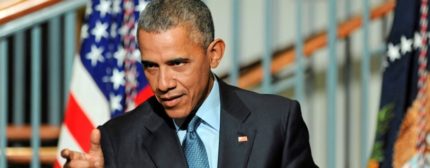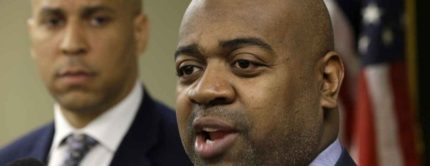“I was coming up Court Street, going toward Martin Luther King Boulevard,” recalls Junius Williams, an attorney and longtime resident of Newark, N.J. “I had three other guys in the car with me, and I remember being pulled over by cops and told to ‘Get out and get up against the car, motherf—-r!” One brandished a shotgun, the other three pointed handguns. “They searched us,” says Williams, but “didn’t find anything, and they were angry. So, they looked in my car” which happened to have “some law books there I hadn’t taken out since I was still a law student at Yale.” One officer said, “They’re law students. Let ‘em go.” However, the other officers were so angry, they “didn’t want to let us go. But he insisted.”
If not for the insistence of that one cop, adds Williams, “I probably wouldn’t be here today.”
Though Williams survived that pivotal encounter on the second day of the Newark rebellion in July 1967, others did not. Between July 12 and July 17, 26 people died, 1500 were arrested and close to 1000 were injured. Victims ranged from 10-year old Eddie Moss, who was shot in the head as officers fired indiscriminately upon his family car on their way to get dinner, to 41-year-old Eloise Spellman, a pregnant mother of 11 children who was shot through the neck as officers sprayed rounds of bullets at the Hayes Homes Public Housing Project. Consistent with the more than 13,000 rounds of ammunition expended by State Police and National Guardsmen, a subsequent governor’s commission found most of the deaths were caused by police or National Guard rifles, though media, at the time, tried to claim otherwise.
While the rebellion was triggered by the beating of Black cab driver John Smith by cops from the city’s notorious Fourth Precinct, the conflict was long in the making. For years, government officials refused to address such pressing concerns of the growing African-American population as job discrimination, rampant police brutality and urban dislocation. Simultaneously, Newark’s white leadership manipulated its politics to ensure little to no representation for the Black community.
“We were living in an apartheid city,” says Lawrence Hamm, chairman of the People’s Organization for Progress in Newark. The veteran activist explains it “wasn’t just that we were racially segregated” but that such segregation “resulted in Black people living very much in inferior conditions.” Hamm describes the massive presence of African-Americans in the city’s Central Ward due to redlining and poverty, and how “conditions were very bad. The public housing was degraded because of a lack of services and those Black folks who didn’t live in the projects lived in inferior substandard housing” in wood-frame tenements that were “overcrowded, rat and roach-infested” and commonly lacked hot water.
Still, Hamm clarifies “the fuse to this bomb of inferior social conditions was, of course, the police. The Newark police had a long history of abusing the Black community.”
Given the current and troubled relations between police and African-Americans in urban centers across the country—and recent civil disruptions in Ferguson, Charlotte and Baltimore—one wonders if such a long, hot summer could occur again. While acknowledging the possibility elsewhere, both Williams and Hamm feel another rebellion in Newark is currently unlikely given certain improvements in governance, substantial demographic shifts and the historic convergence of factors affecting American urban centers in the 1960s.
The Newark rebellion was part of a social trajectory longer and hotter than any one summer. In July 1964, in the midst of the civil rights movement, New York’s Harlem exploded upon the fatal shooting of 15-year-old African-American student James Powell by a white off-duty police lieutenant. The event was the catalyst for similar rebellions across the country in cities like Chicago and Philadelphia by African-Americans bitter from decades of racism, police brutality, discrimination in employment and housing, and political and economic exclusion. Largely uninspired by a “turn the other cheek” philosophy, such events marked a shift in national tone for African-Americans, particularly those impoverished and stacked together in housing projects in America’s urban centers. Where the national narrative on race had been dominated by the civil rights movement in the South, the hostile state response to increasing demands by African-Americans in the North created a volatile national atmosphere that would continue throughout the decade.
By the turn of 1967—two years removed from the Watts rebellion of 1965 and a year after uprisings in Cleveland and Omaha—mounting tensions between government, its police force and the community had turned Newark into a powder keg. The latter reeled from ongoing police brutality, employment discrimination, a largely unresponsive city government and a skewed policy of “urban renewal,” a common euphemism for white land grabs and African-American displacement. Consequently, on the steamy summer night of Wednesday, July 12, when two red-faced officers pulled up and dragged a beaten Black man into the city’s Fourth Precinct, the community took notice. Moments before, 40-year-old Army veteran John Smith was driving his cab west on 15th Avenue when he came upon a double-parked patrol car at the intersection of South 7th Street and flashed his lights to let them know he was going to pass. Later claiming Smith had tailgated and then “shot around” them at the intersection, white officers John DeSimone and Vito Pontrelli stopped the cabby and arrested him. Smith reported DeSimone beat him with his nightstick in the car and, not long after the cabby was dragged into the precinct in full view of angry residents at Hayes Homes Projects—many who’d been harassed or beaten by cops themselves—an unsubstantiated rumor began circulating that Smith was dead. The ensuing clash between police and the community would spread throughout the Central Ward leaving vast areas of destruction in its path, some left unrepaired to this day.
Though the rebellion ultimately came to an end in Newark, by no means did the rebellion end there. While the city still burned, nearby Plainfield erupted on July 14 for related reasons, leaving one police officer dead, 50 people injured and hundreds of thousands of dollars in property damage. Then, on July 23, a raid by white officers on an after-hours club in a Black neighborhood at the corner of 12th and Clairmount streets in Detroit ignited the deadliest conflict of the summer. As tanks lumbered through the city, the violence finally ceased five days later with 43 dead and 683 buildings damaged. A subsequent presidential commission on the Detroit rebellion would attribute most of these deaths to the indiscriminate violence of police officers and National Guardsmen. Altogether, there were over 100 cases of civil unrest in the United States in the long, hot summer of 1967.
As for Newark, the city would never be the same. In the aftermath of the rebellion, a power vacuum formed as city leadership—represented by the embattled administration of mayor Hugh Addonizio—lost influence and credibility, and white residents scurried to leave. This gap was filled by a number of emerging Black leaders and organizations set on advancing the community’s long disregarded agenda. Among the items was adequate and affordable housing, access to federal dollars and programs, access to better health care and employment, and the cessation of white land grabs in urban communities as epitomized by the plan to displace hundreds of Black residents with a medical complex. In 1970, such energies culminated in the watershed election of the city’s first Black mayor, Ken Gibson.
“I think if there had not been a rebellion, Gibson would not have made it in 1970,” offers Hamm. Soon after his election, the new mayor appointed the 17-year-old Hamm to the Newark Board of Education, making him the youngest school board member in the country. He notes how the post-rebellion environment empowered Gibson while also enabling the election of several Black councilman through efforts by popular activist and poet Amiri Baraka and a strong coalition of community organizers. The late Baraka’s son, Ras, who currently serves as mayor of Newark, is the latest in a string of African-American mayors since the early ’70s.
“I think people have a little more faith in Mayor Baraka and in that series of Black mayors who followed Ken Gibson,” says Williams, whose recent memoir, “Unfinished Agenda,” uses lessons learned from the urban politics of the late 1960s and ’70s to inspire contemporary organizers. “The institutions that address grievances today are a lot more effective. That’s why I call it a rebellion and not a riot, since it ultimately bettered the government apparatus and agencies in 1967 that “were not doing their jobs.”
While progress has been evident since those dark days in 1967, police brutality has remained an issue. In March 2016, the U.S. Justice Department reached a comprehensive settlement with the city to “bring wide-ranging reforms and changes to the Newark Police Department (NPD). The agreement, which is subject to court approval, resolves the department’s findings that NPD has engaged in a pattern or practice of unconstitutional stops, searches, arrests, use of excessive force and theft by officers in violation of the First, Fourth and 14th Amendments. The proposed consent decree also resolves the department’s findings that NPD’s law enforcement practices had a disparate impact on minorities in Newark.”
Though many have been encouraged by the improvement in relations between community and police under federal monitoring, the push by current Attorney General Jeff Sessions to roll back such oversight does not bode well.
“I would imagine Sessions will try to put a halt to current efforts of police reform,” says Hamm. “If that happens, and the Newark Police go back to their old ways and we get an uptick in police brutality, I am certain that will bring about social agitation.
“Whether or not that would lead to outright rebellion,” adds Hamm, is “hard to say.”


